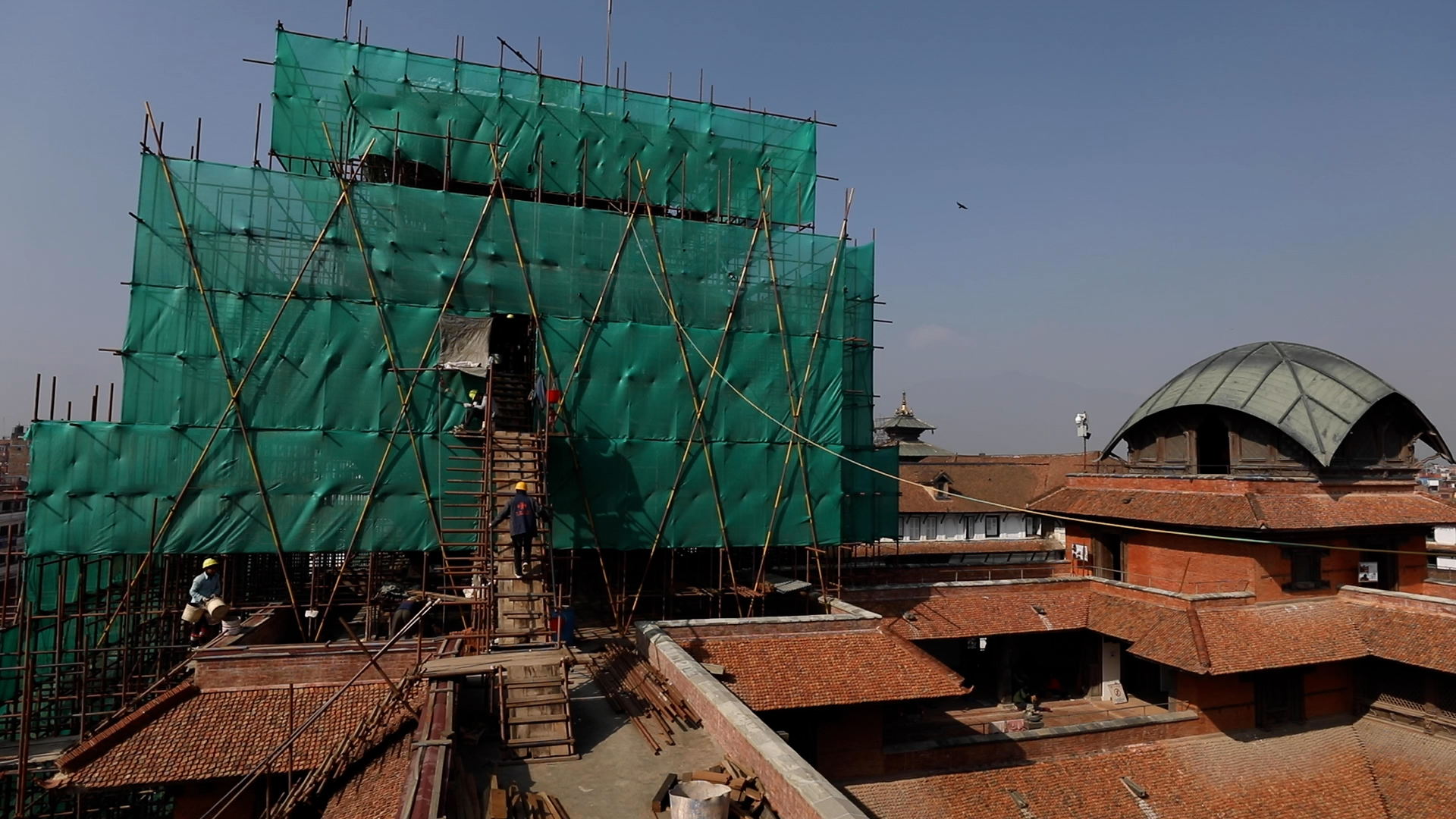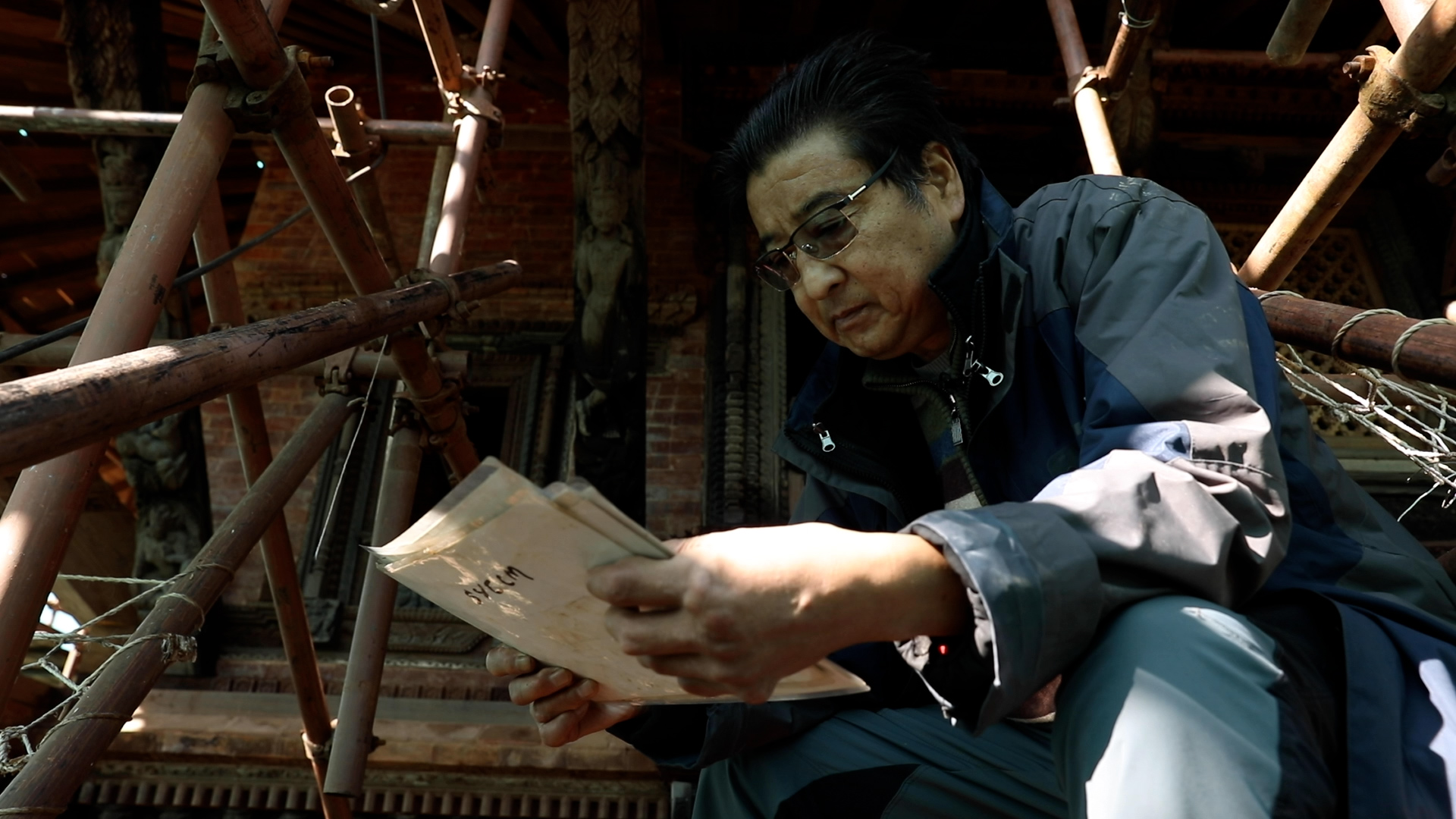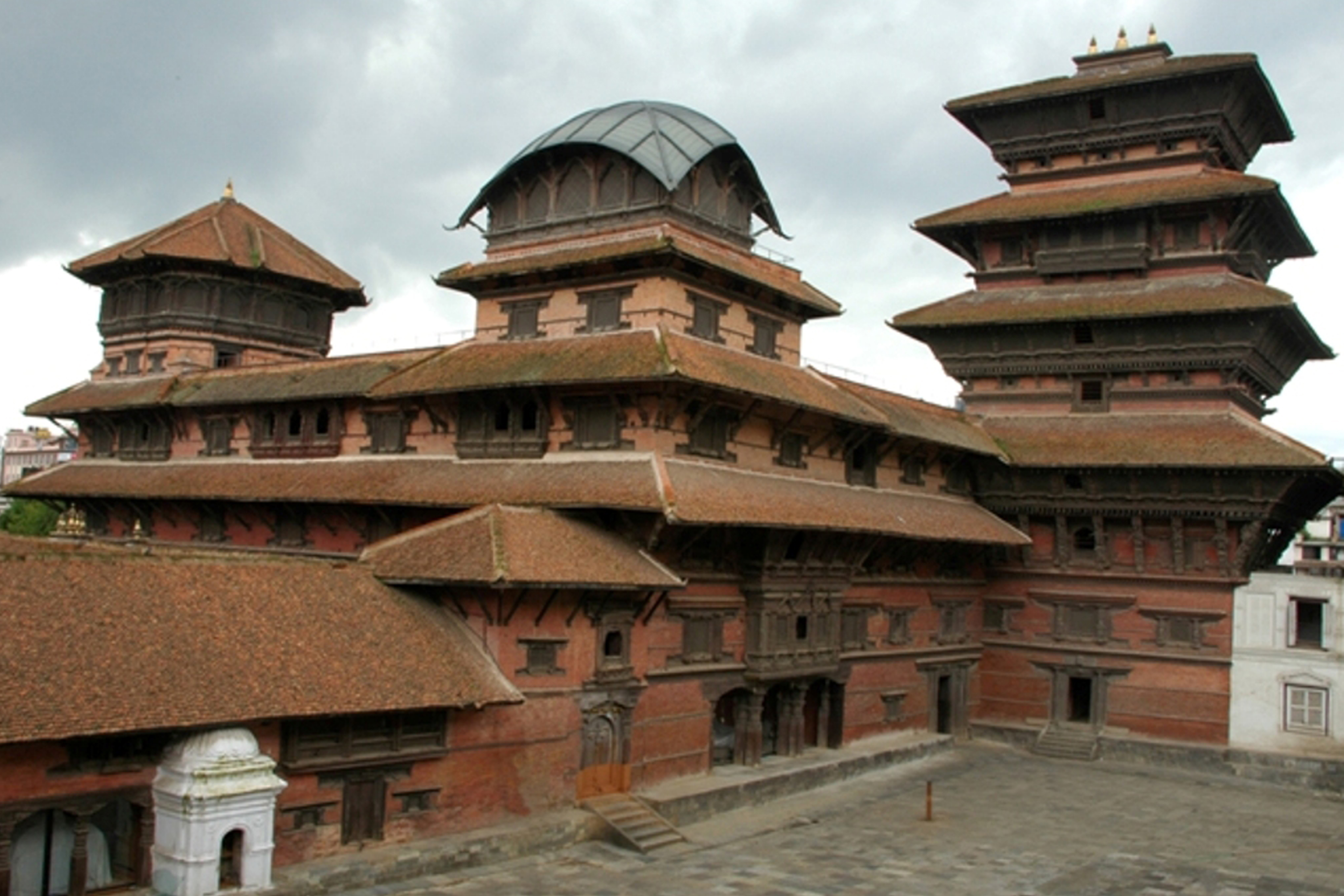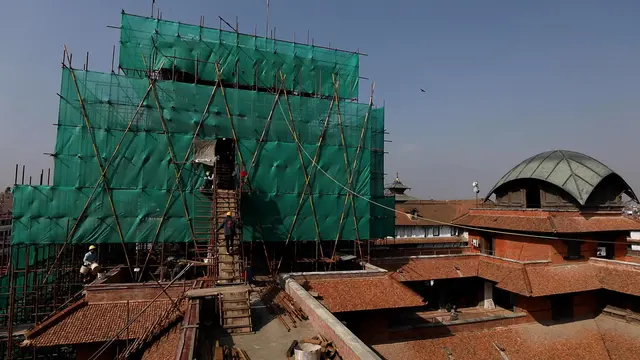02:25

Reconstruction halted
It's been almost a year since Guo Qianru, a 33-year-old Chinese conservation engineer, was last in Nepal. When she boarded a plane back to China early in January, she imagined she'd be back in Kathmandu soon after the Spring Festival holiday. But then COVID-19 outbreak struck, and she was unable to return to the place where she'd spent more than 200 days a year for the past two years.
Since August 2017, Guo and six colleagues from the Chinese Academy of Cultural Heritage (CACH) had been working with a team of Nepalese artisans to restore the nine-story Basantapur complex in Kathmandu, a UNESCO World Heritage Site that was badly damaged during the 2015 earthquake.
However, the coronavirus pandemic brought Nepal's post-earthquake reconstruction to a sudden and grinding halt. Restoration work at the Basantapur complex was suspended in late March, when Nepal went into national lockdown.

The nine-story Basantapur complex under restoration in October 2019. /Photo courtesy of China Central Television
A daunting task
In April 2015, a 7.8-magnitude earthquake hit the Kathmandu Valley, causing widespread death and destruction and reducing numerous priceless historical buildings to rubble.
The Kathmandu Valley, comprising seven Protected Monument Zones, was recognized as a UNESCO World Heritage Site in 1979 for its outstanding architecture and unique coexistence of different religions.
The nine-story Basantapur complex stands at the entrance to Kathmandu Durbar Square. It was built in the late 18th century by Prithvi Narayan Shah, the first king of the Shah Dynasty, who unified Nepal.
At the request of the Nepali government, China pledged 94 million yuan (roughly $14 million) to help restore the Basantapur complex. The project was expected to last five years, from 2017 to 2022.
In the two years before work got underway, the complex had suffered further damage. It had gone through two monsoons since the earthquake.
In the early days there was some friction between the Chinese and Nepali experts, regarding how the structure should be restored. The Chinese supported a policy of minimum intervention, while the Nepalese wanted to completely rebuild the structure since, for them, renewal means progress. With time, the Chinese view prevailed.

Zhou Jianguo uses old photos as a reference for the restoration work. /Yan Jingwei/CGTN
"They gradually accepted our concept, because they see that we're genuinely working hard to preserve their cultural heritage," said Guo. Ultimately, a middle-way approach was agreed – keeping any parts that were still reusable and making replacements for any that were lost or beyond repair.
Another challenge facing the Chinese team initially was a lack of detailed references, which were crucial if they were to reassemble the structure and its various parts precisely as they had been. They sought out local photographers, asking them for any old photos they might have of the complex, and consulted local conservation experts to see if they had any unpublished reference materials.
"In traditional Nepali architecture, all the wooden pieces are hand-made," said Zhou Jianguo who, as someone with considerable experience of restoring famous temples in Tibet, is the site supervisor for the Basantapur restoration. "We spent a year, numbering all the fallen parts we could retrieve and trying to assemble them piece by piece to get the jigsaw right."
"We're also thinking about digitalizing the reference materials we've got," said Guo. "And then transferring them to Nepal's Department of Archaeology for future protection efforts."

The nine-story Basantapur complex before the 2015 earthquake. /Photo courtesy of the Chinese Academy of Cultural Heritage
Collective effort
The 2015 earthquake brought down many of the complex's wooden components. Craftsmen with the skills needed to restore them were few and far between. So, the Chinese team scouted the nearby city of Bhaktapur, renowned for its wood carvers.
Sanukaji Shakya has been a wood carver for 20 years. He joined the Basantapur restoration work in May 2018, repairing broken wooden struts and other components. "We work in our traditional way," said Shakya. "I'm very happy that the Chinese respect our opinions."
Restoring the old buildings damaged in the 2015 earthquake has been a long, slow process. It's estimated that 90 percent of the country's architectural heritage was impacted. With limited funding and manpower, Nepal's Department of Archaeology was in desperate need of help.
What lies ahead
The restoration work at the Basantapur complex continued into late March. But when Nepal went into national lockdown, all the workers were temporarily laid off.
Just before the lockdown, the three golden pinnacles were re-erected on top of the nine-story Basantapur Tower. This signaled that the restoration work was nearing completion.
One Chinese expert has remained in Kathmandu, to conduct regular safety checks at the site. The rest of the team are staying in Beijing, waiting to return to the city of temples to wrap up the restoration work, once Nepal brings the pandemic under control. Although it's uncertain when that will be, they remain hopeful that the project can be completed on schedule in 2022.
 简体中文
简体中文

